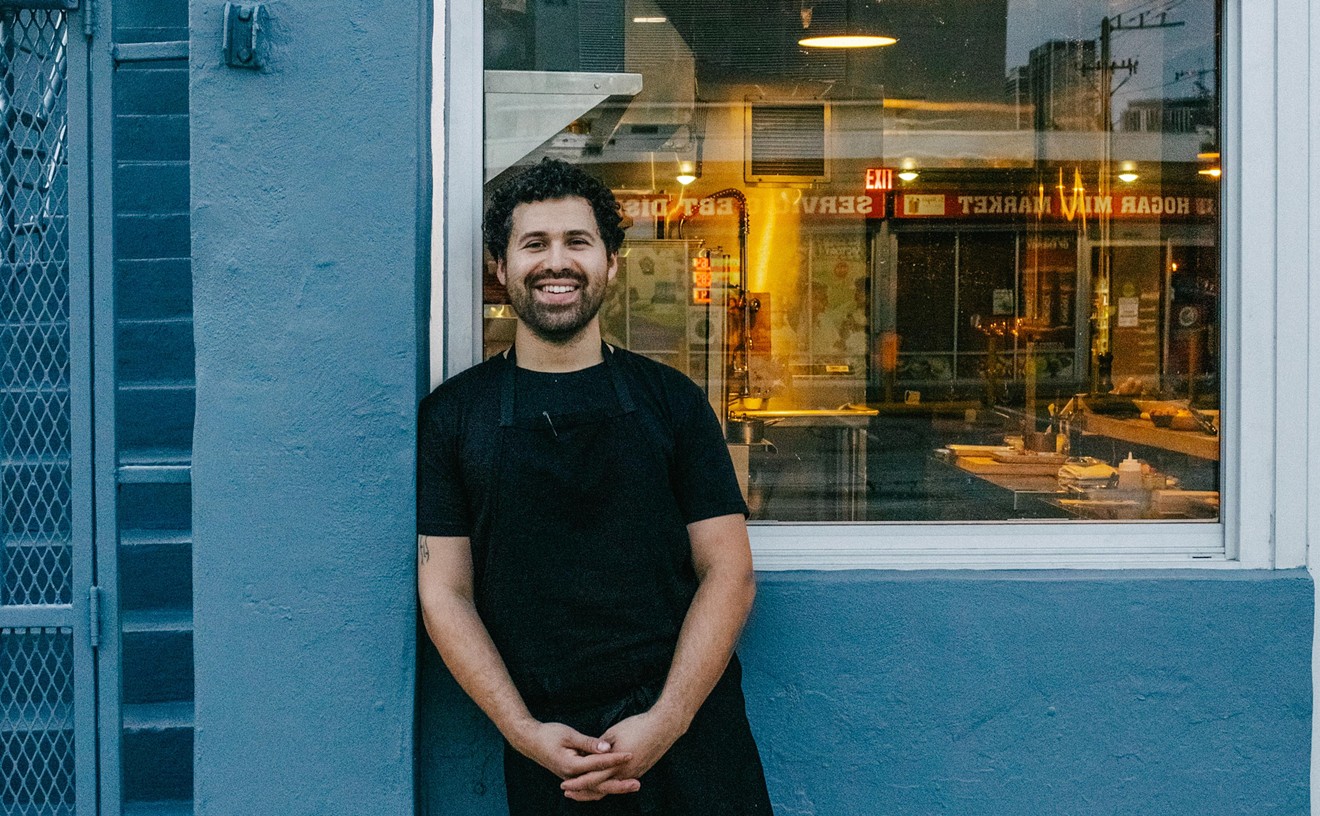His resume is different than that of most of Miami's chefs. Jan Jorgensen has worked at top restaurants in Zurich, in Greenland, at the well-regarded Fakkelgaarden in his native Copenhagen, and under chef Jeremiah Tower at California's landmark Stars. Upon arriving in Miami during the early Nineties, Jorgensen operated JanJo's in Coconut Grove; in 1994 he opened Two Chefs in South Miami. Since that time, he has successfully surfed the turbulent waves of South Florida's fickle economy, fussy diners, and vacillating trends.
While Jorgensen shares the same elevated stage with Miami's most
dedicated and talented veteran chefs, the spotlight rarely shines on him. As it
turns out, he has a lot to say. In the first part of this wide-ranging two-part interview, we discuss pork
belly, small plates, food trucks, the Food Network, and the meaning of being a chef -- among other things.
New Times: How has the industry
changed since you began?
Jan Jorgensen: It has changed a lot. I think the old guys - and I consider
myself an old guy, I'm 47 -- to us it's a profession. It's craftsmanship, not a
ten-minute TV show and five minutes of fame. I'm not going to fault the Food
Network, because I think it's a lot of fun to look at, but sometimes it might
be giving the wrong message. There are only a handful of people who actually
make it to TV and can make a good living with it.
Do you use students at
Two Chefs?
I love students, especially if they're hungry. I start them
out on cold salads and then build them up from there, to see what they're all
about. They're inexpensive labor, and they don't come with twelve years of
'I've been doing it this way, and I've been doing that'. I do things by the
book, so they don't know how to do things any way but the right way.
We've talked in the
past about how local culinary programs aren't great.
I've had students come from the Cordon Bleu School, the ones
who advertise on TV. You ask them what a béarnaise sauce is and they have no
clue. They can't even hold a
knife. One of them told me they basically sat for two years in a classroom and
then a couple of months in a kitchen. How much money did the kid just spend?
$40,000 dollars? I find that to be shameful.
And yet some of them consider themselves 'chefs'.
'Chef'' is a misused word, and I think the Food Network has a lot to do with that. There are too many chefs and not enough cooks. You'll be watching a Burger King commercial and there's a 'chef'. If that's a chef, then I'm a cook.
Purveyors will come in and show me beautiful, I mean beautiful filet mignons portioned into center cuts, eight ounces each. I look at them and say 'These are absolutely gorgeous, and $9 a pound is a competitive price...but where are the trimmings?' I need the trimmings to make money. That's what a chef does. You take the trimmings and you make a beef stroganoff. I think that's one of the reasons I'm still around, because I'm actually doing that.
I'm going to name a few things and see what you think, starting with food trucks.
I always thought it would be great to have a hot dog stand downtown. You have a truck, you just pull over to the side of the road on Brickell Avenue and open up your doors. What an excellent way of doing business. You go where the action is, and you don't have to worry about waiters, about dishes...
Pork belly.
I used to serve it, when it just came out. I find it to be too fatty, a little too sloppy. I like it better as a chicharron, or cracklings.
Small plates.
When I first came here (to the States), I went to a restaurant with all of these people, and everyone ordered their own entrees. When the food came they started eating off each other's plates. I nearly had a heart attack! I had ordered my entree and that's what I had intended to eat.
But I don't know that this (small plates) is a new concept. I mean the Chinese have been doing it forever, and tapas have been around, and the smorgasbord where I come from - you get a little herring, you get a little bit of this, a little bit of that...We keep on reinventing the wheel. It's just a new gimmick on how to get people to eat, but anything that can be shared, where you can take bites of different things, is great. Now, I'm not going to mention any restaurants, but by the time you've eaten four small bites you actually spend more money than if you were to buy an entrée and maybe an appetizer.
Tomorrow: Jan talks about Ferran Adriá, Michael Schwartz, Scandinavian cuisine, and the secret to a perfect soufflé.
Follow Short Order on Facebook and Twitter @Short_Order.










